
‘Ambush’ (1909).
Before opticians, ophthalmologist, and optical devices to focus the eye, everyone had their own personal view of the world. Those with short-sightedness saw the world like an Impressionist painting. Those with long-sightedness viewed the distance clearly but were unable to focus on the things closest to hand. Everyone’s vision of the environment around them was literally different. Spectacles, contact lenses, and corrective surgery have changed this. Now, our views of world are generally divided by religion, politics, wealth, and emotion.
The artist and engraver Marcel Roux (1878-1922) had his own particular view of the world which stemmed from a rather strange belief. Roux believed if evil exists then so does the Devil. If the Devil exists then so does God. And if there’s a God it’s our duty to be good and battle evil.
This runs contrary to the thoughts of ancient Greek philosopher Epicurus who believed the existence of evil proved there was no God.
Roux’s ideas were fashionable with some of the Decadent and Symbolist artists of the day. As well as writers like G. K. Chesterton, who after one occult experience–an overheard conversation apparently–realised evil was very real which made him think if the Devil exists then so does God. It led to Chesterton abandoning his decadent, foppish ways for Christianity.
Roux was born into a wealthy French family. His father, Joseph Roux was known for his productions of Offenbach’s operas. As a child, Roux accompanied his parents on tours across Europe to Vienna, Paris, St. Petersburg, wherever one of his father’s productions was being performed. Such an artistic background inspired Roux’s interest in art and engraving. In 1895, Roux enrolled at the School of Decorative Arts in Nice. He became an award-winning student which enabled him to study at the École des Beaux-Arts in Lyon in the following year.
There were two main influences on Roux. His teacher, Auguste Morisot who encouraged Roux to follow spiritual approach to his art. The second was his seeing an exhibition of Rembrandt’s engravings which inspired Roux to dedicate his career to becoming an engraver. His first major work The Temptation of Saint Anthony combined both influences.
As Roux built a reputation as an artist and engraver, he started producing work informed by his personal religious beliefs. He believed the industrial revolution had altered a rustic Eden into a living Hell. He viewed the advances in industry, empire, and colonialism as evil actively corrupting the world. Evil was everywhere and encouraging humanity towards its doom.
During a sermon at his local Cathedral, Roux was inspired to focus solely on producing Christian work after a priest extolled the congregation to :”Go and be my witnesses, in Jerusalem, in Galilee and to the ends of the earth.” It was like a starting pistol for Roux to begin his true vocation. But unlike other religious artists, Roux focussed not on the good but on the evil he believed inhabited the word. He obsessed over death, Hell, and Satan.
Roux’s belief the world was unravelling and a confrontation between good and evil inevitable was confirmed by the First World War. Roux served on the front, but was invalided out. He returned to the war as a nurse. Collecting the wounded from a quagmire of blood and soil tested Roux’s religious belief. He suffered from ulcers which eventually saw him return to Paris a broken man. His health was poor. He was unable to continue with engraving. He turned to woodcuts producing works on Pontius Pilate, The Song of Songs, Lazarus and The Garden of Tortures.
Roux died in 1922.

‘The Weird Orchestra’ (1904)

‘Untitled’ or ‘A Modern Etching’ (1914).

‘Paradise Lost’ (1909).
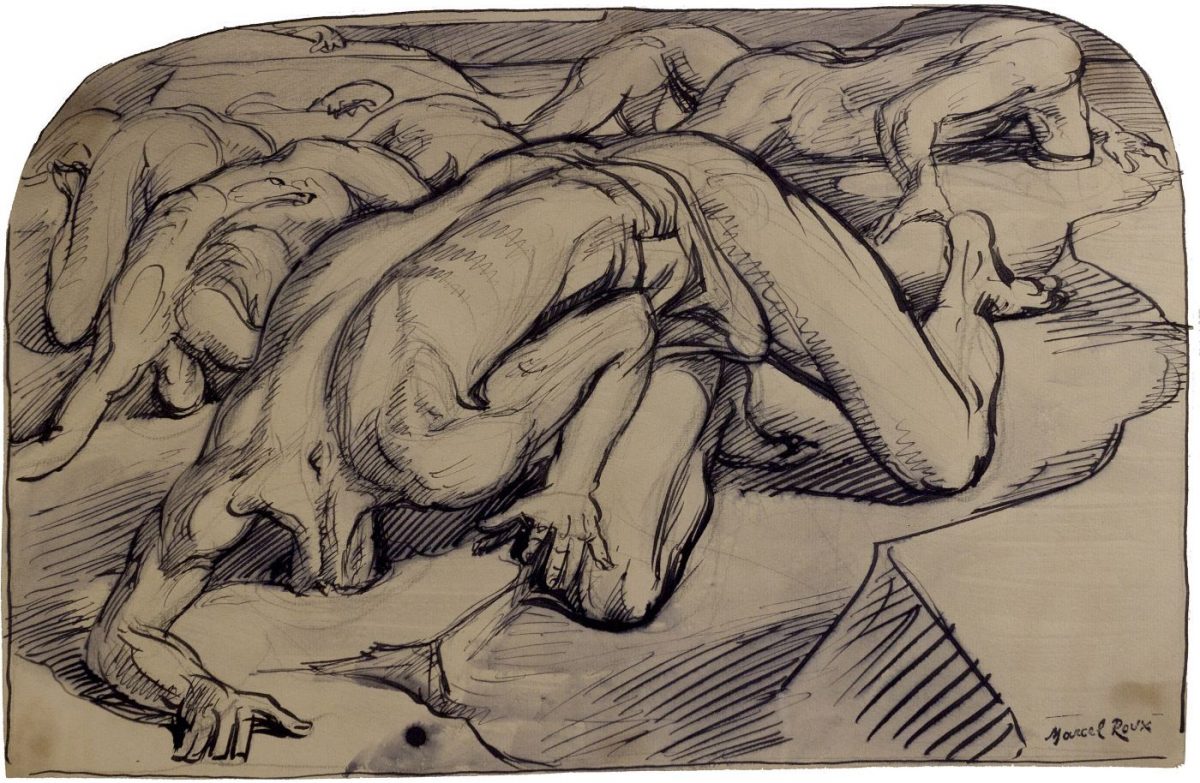
‘Untitled’ (1909).
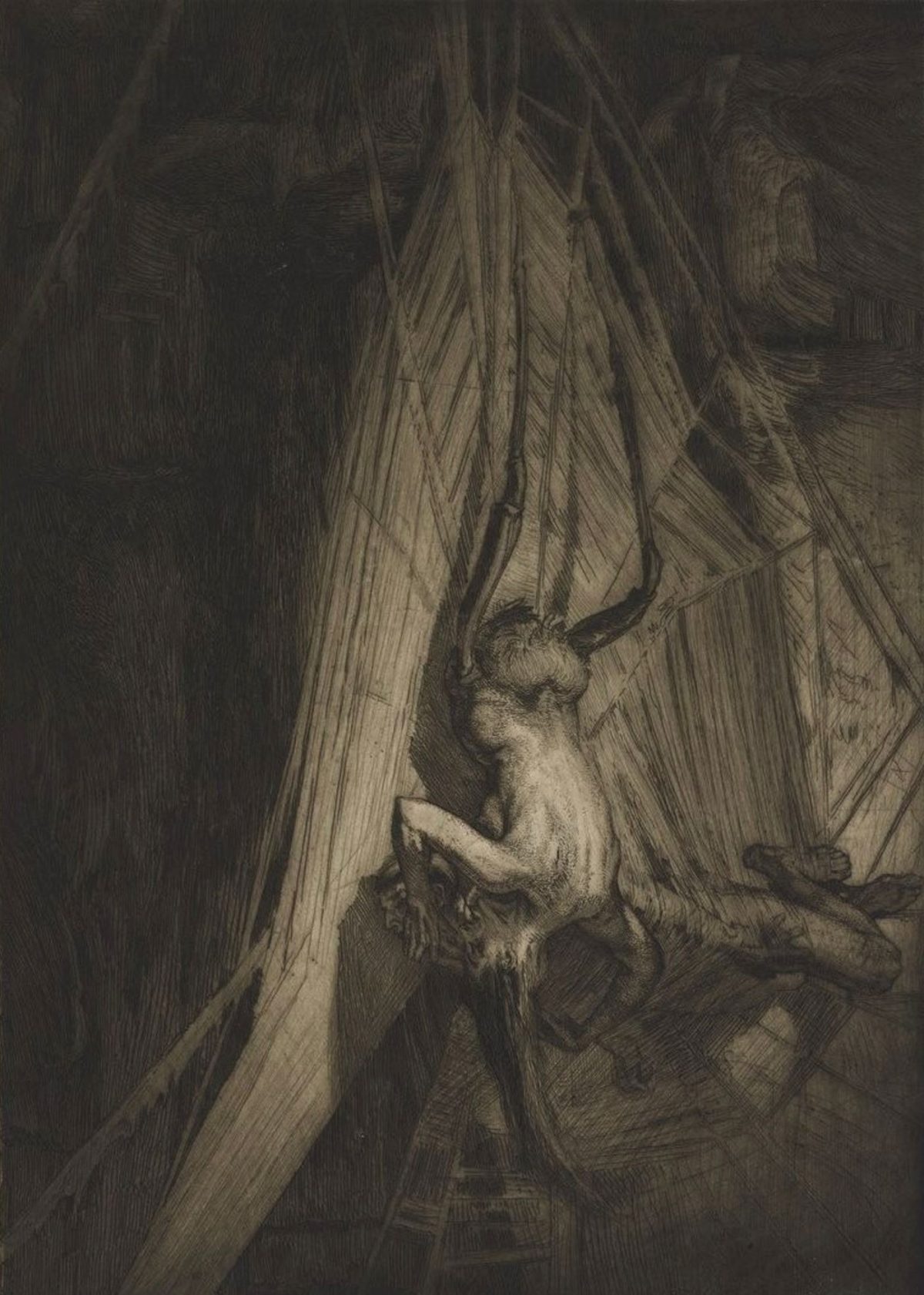
‘The Spider’ (1910).
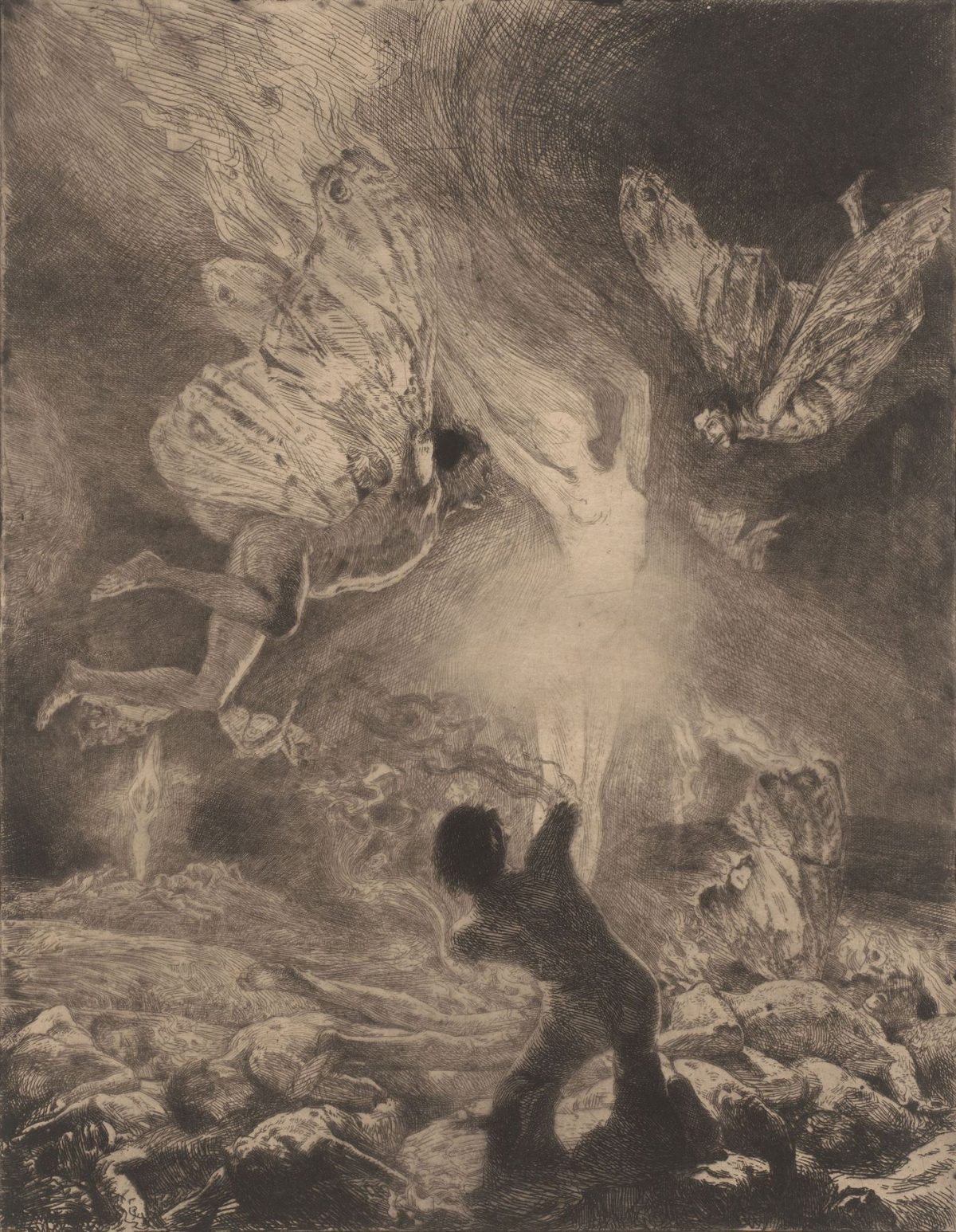
‘A Girl of Pleasure’ (1909).
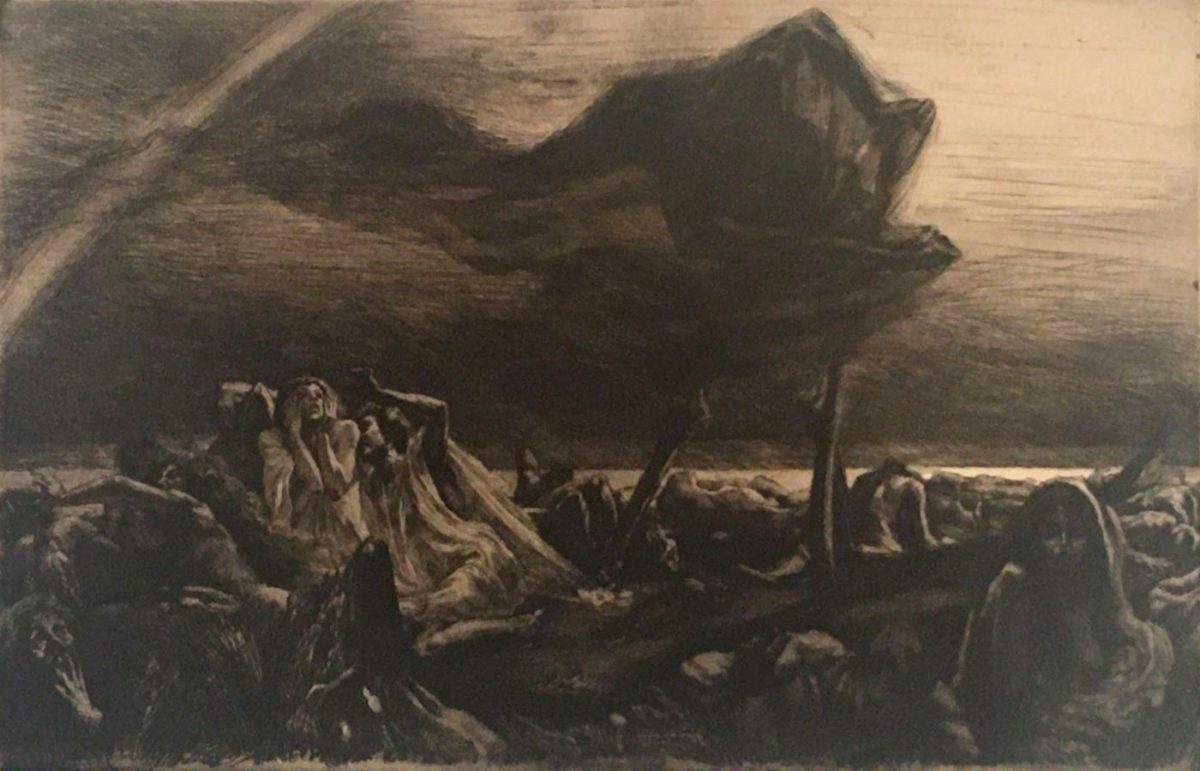
‘The Grim Reaper’ (1907).
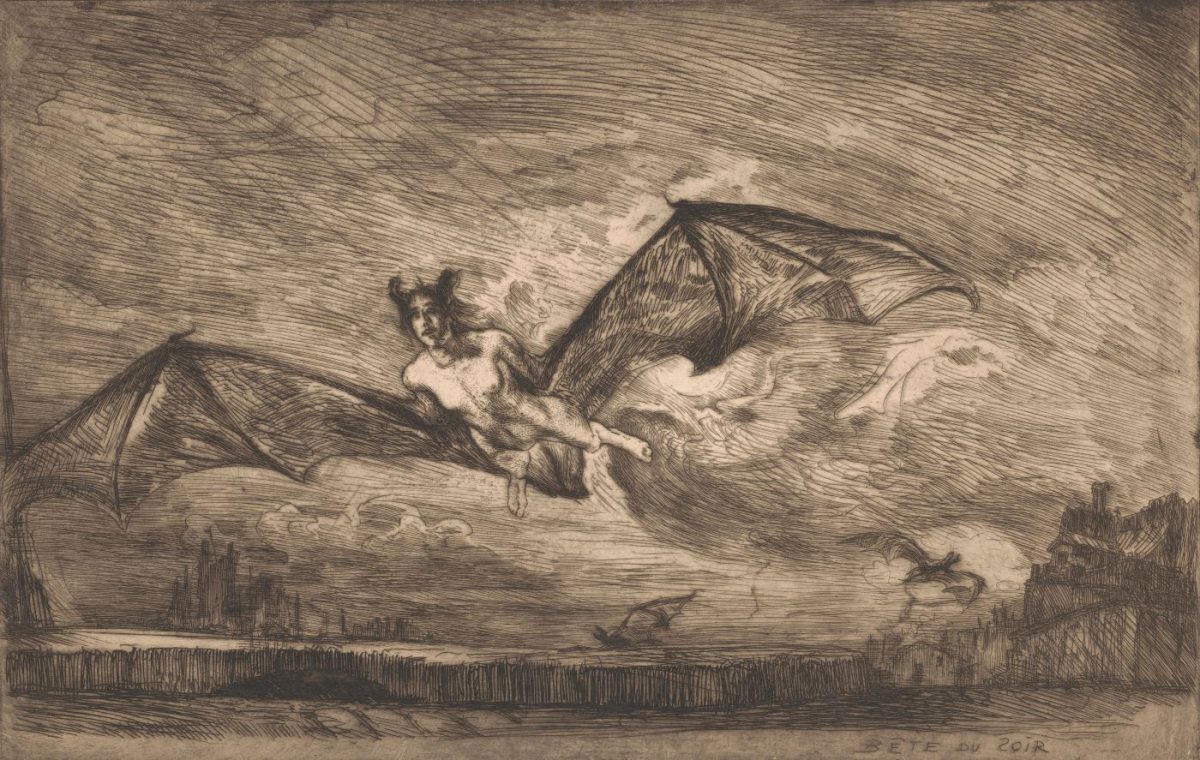
‘The Evening Beast’ (ca. 1900).
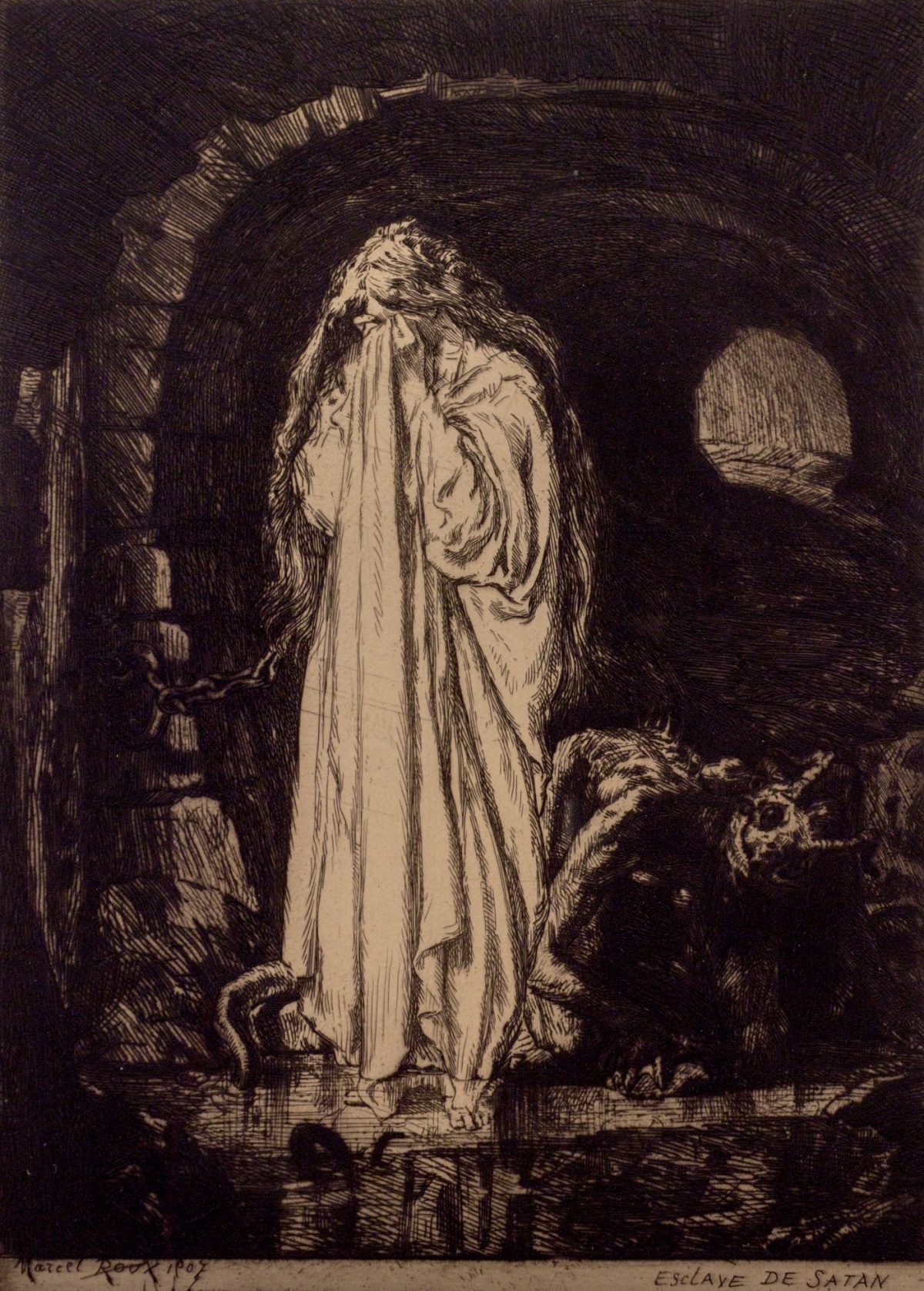
Satan’s Slave (1907).
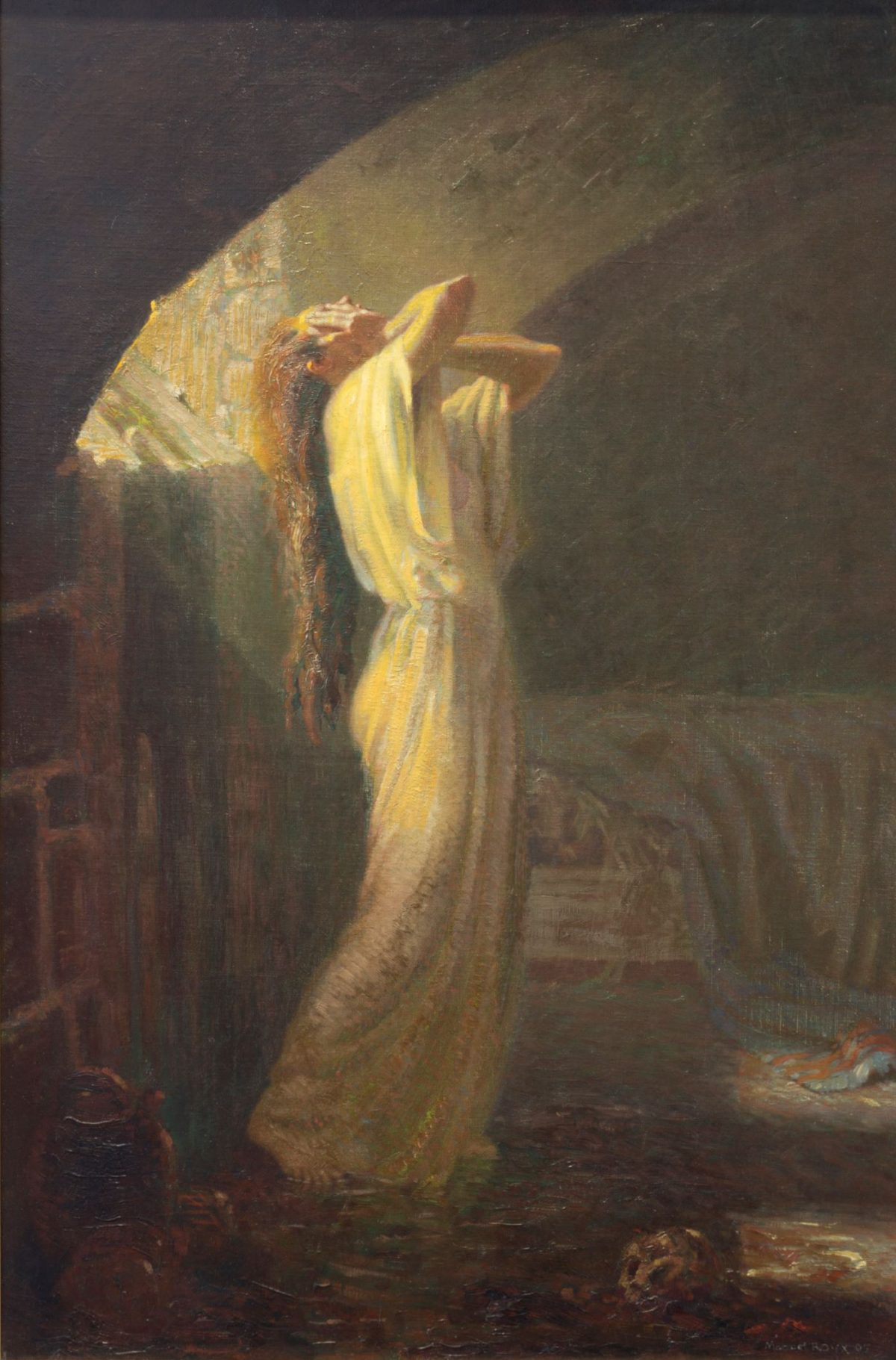
‘Despair’ (1905).
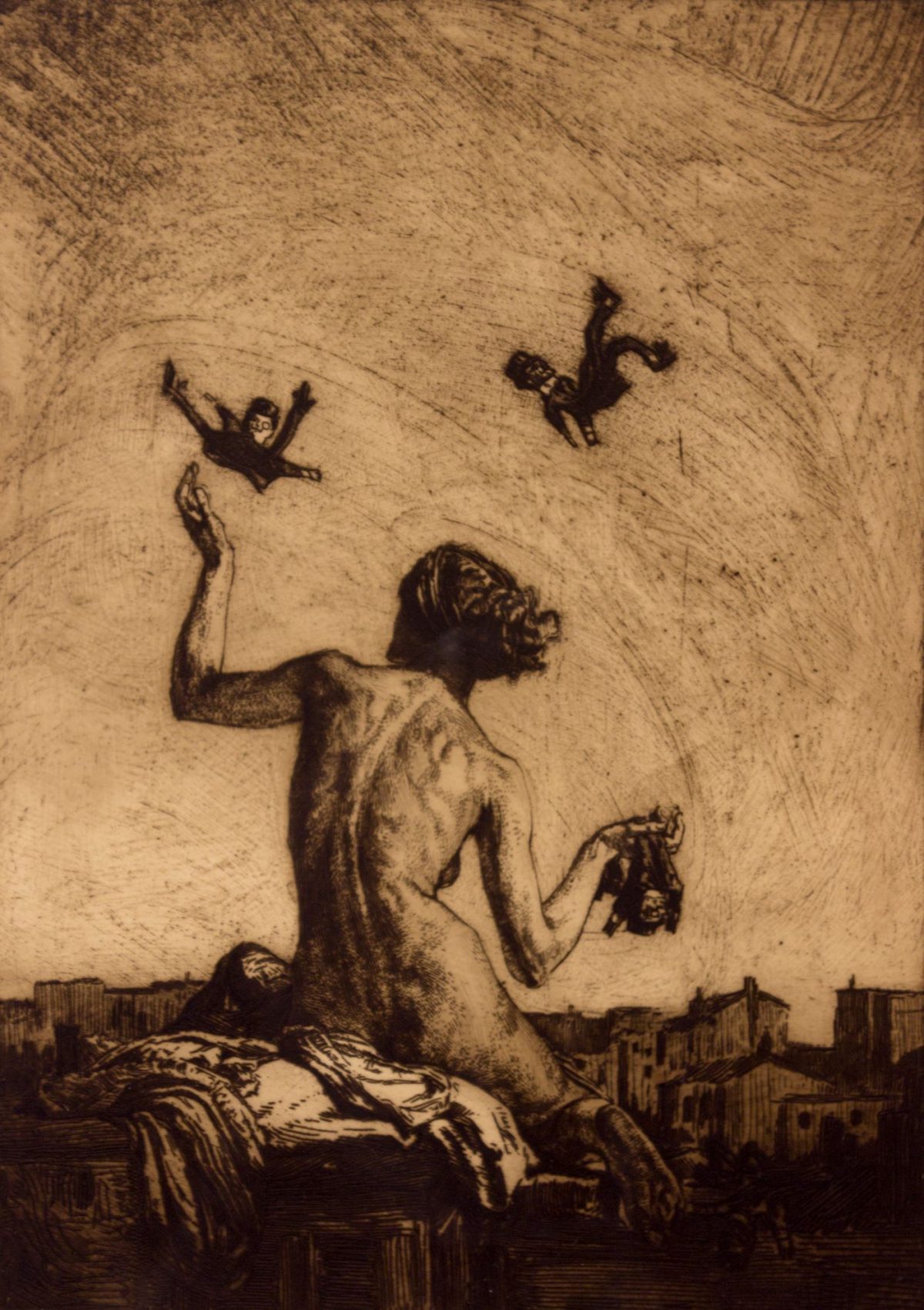
The Puppets’ (1910).
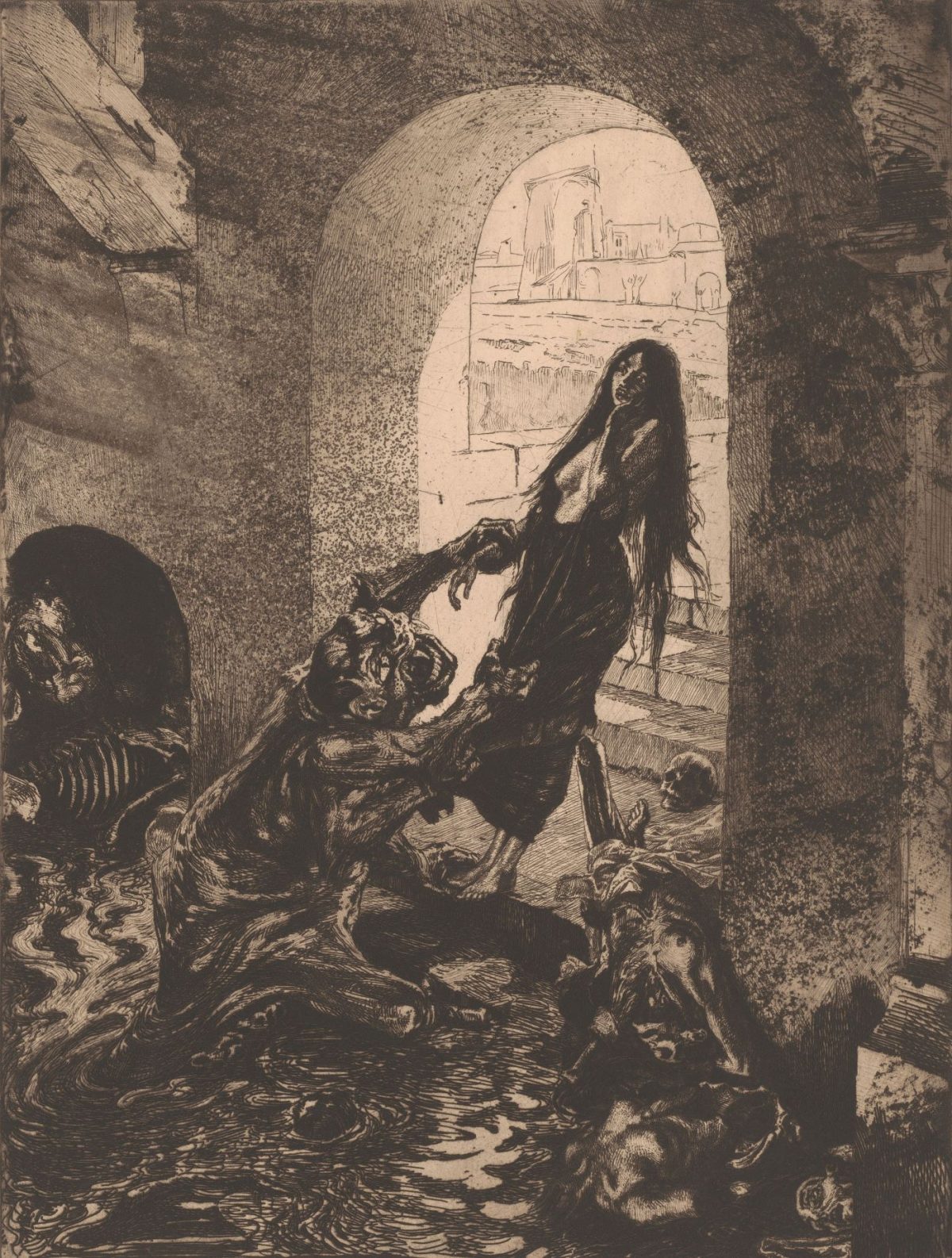
‘Offering to Moloch’ (1908).
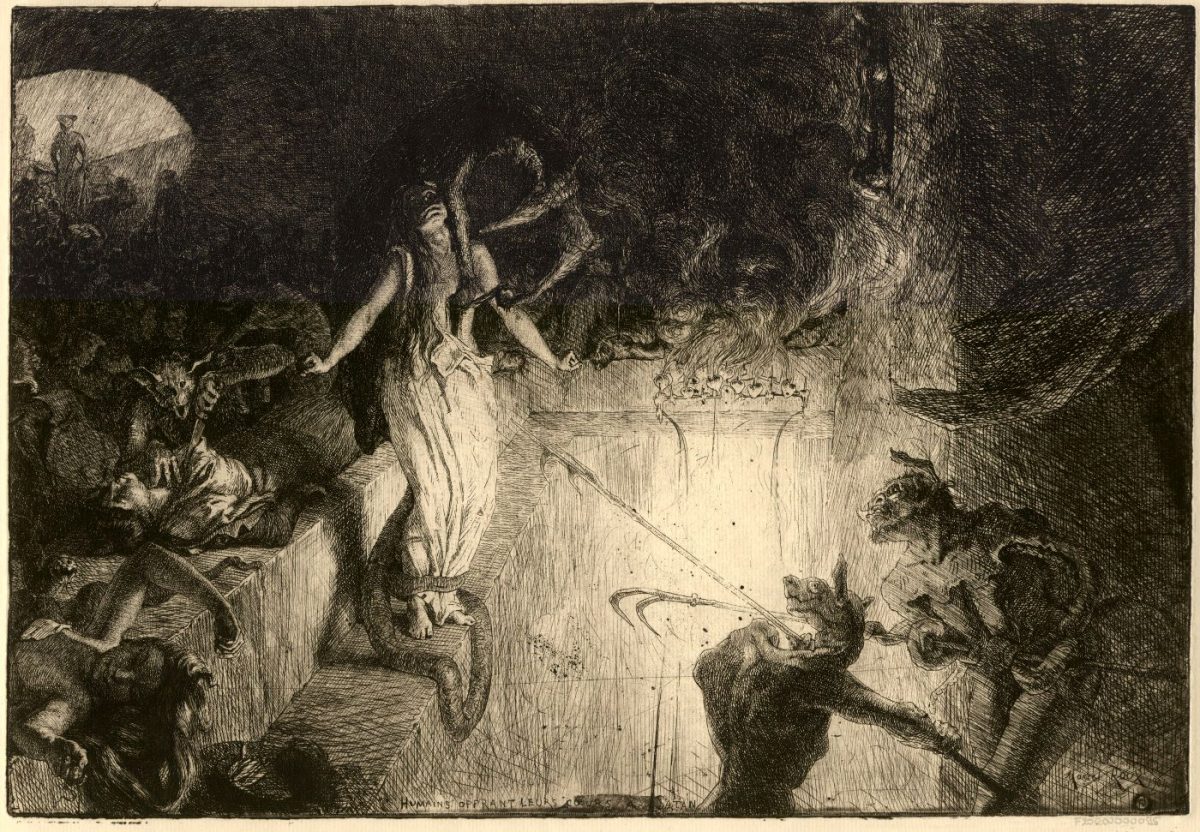
Offering Their Souls to Satan’ (1904).
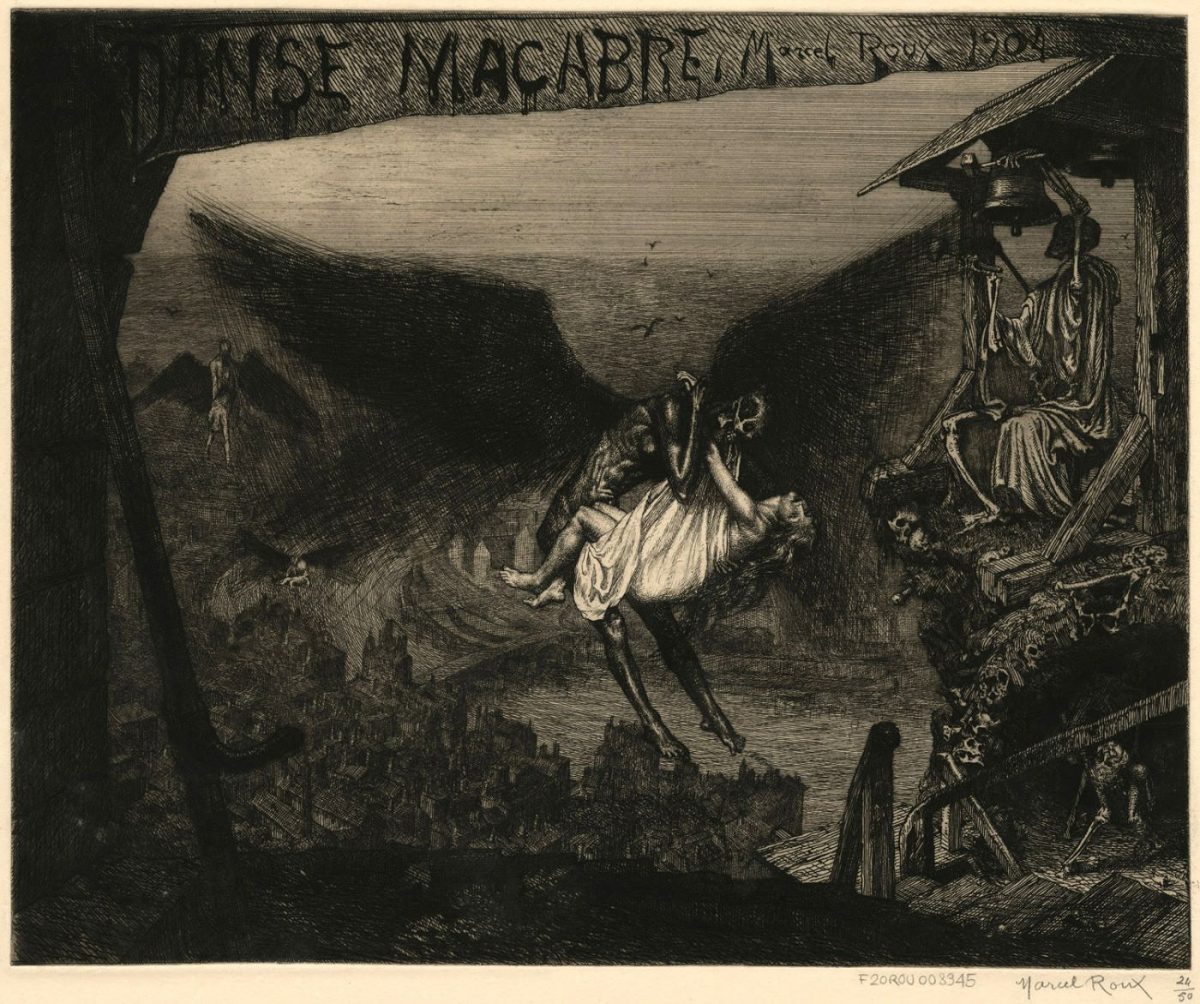
‘The Dance of Death’ (1904).
H/T Monster Brains and WikiCommons.
Would you like to support Flashbak?
Please consider making a donation to our site. We don't want to rely on ads to bring you the best of visual culture. You can also support us by signing up to our Mailing List. And you can also follow us on Facebook, Instagram and Twitter. For great art and culture delivered to your door, visit our shop.


